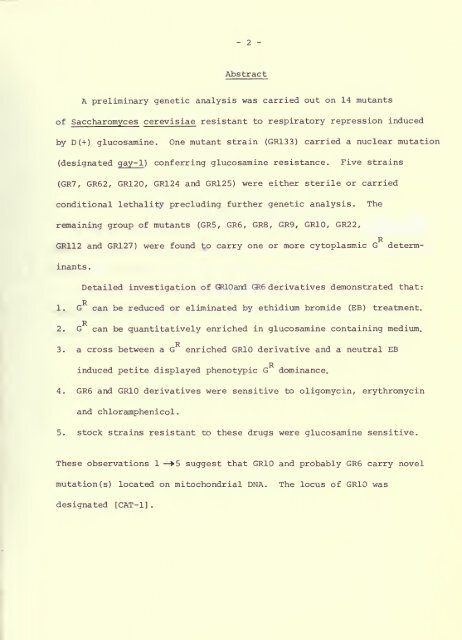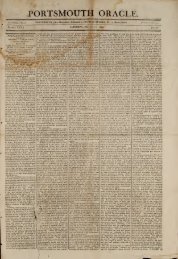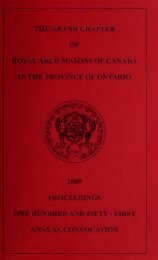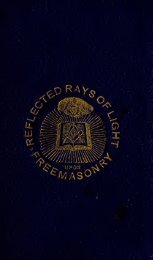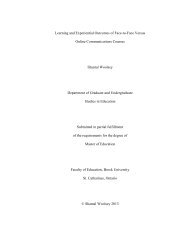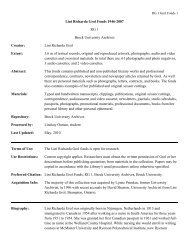View/Open - Brock University
View/Open - Brock University
View/Open - Brock University
You also want an ePaper? Increase the reach of your titles
YUMPU automatically turns print PDFs into web optimized ePapers that Google loves.
Abstract<br />
A preliminary genetic analysis was carried out on 14 mutants<br />
of Saccharomyces cerevisiae resistant to respiratory repression induced<br />
by D(+) glucosamine. One mutant strain (GR133) carried a nuclear mutation<br />
(designated gay-1 ) conferring glucosamine resistance. Five strains<br />
(GR7, GR62, GR120, GR124 and GR125) were either sterile or carried<br />
conditional lethality precluding further genetic analysis. The<br />
remaining group of mutants (GR5, GR6, GR8, GR9, GR10, GR22,<br />
GR112 and GR127) were found to carry one or more cytoplasmic G determ-<br />
inants .<br />
Detailed investigation of GRlOand GR6 derivatives demonstrated that:<br />
p<br />
1. G can be reduced or eliminated by ethidium bromide (EB) treatment.<br />
2. G can be quantitatively enriched in glucosamine containing medium.<br />
p^<br />
3. a cross between a G enriched GR10 derivative and a neutral EB<br />
induced petite displayed phenotypic G dominance.<br />
4. GR6 and GR10 derivatives were sensitive to oligomycin, erythromycin<br />
and chloramphenicol<br />
.<br />
5. stock strains resistant to these drugs were glucosamine sensitive.<br />
These observations 1 —>5 suggest that GR10 and probably GR6 carry novel<br />
mutation (s) located on mitochondrial DNA. The locus of GR10 was<br />
designated [CAT-1]<br />
.


